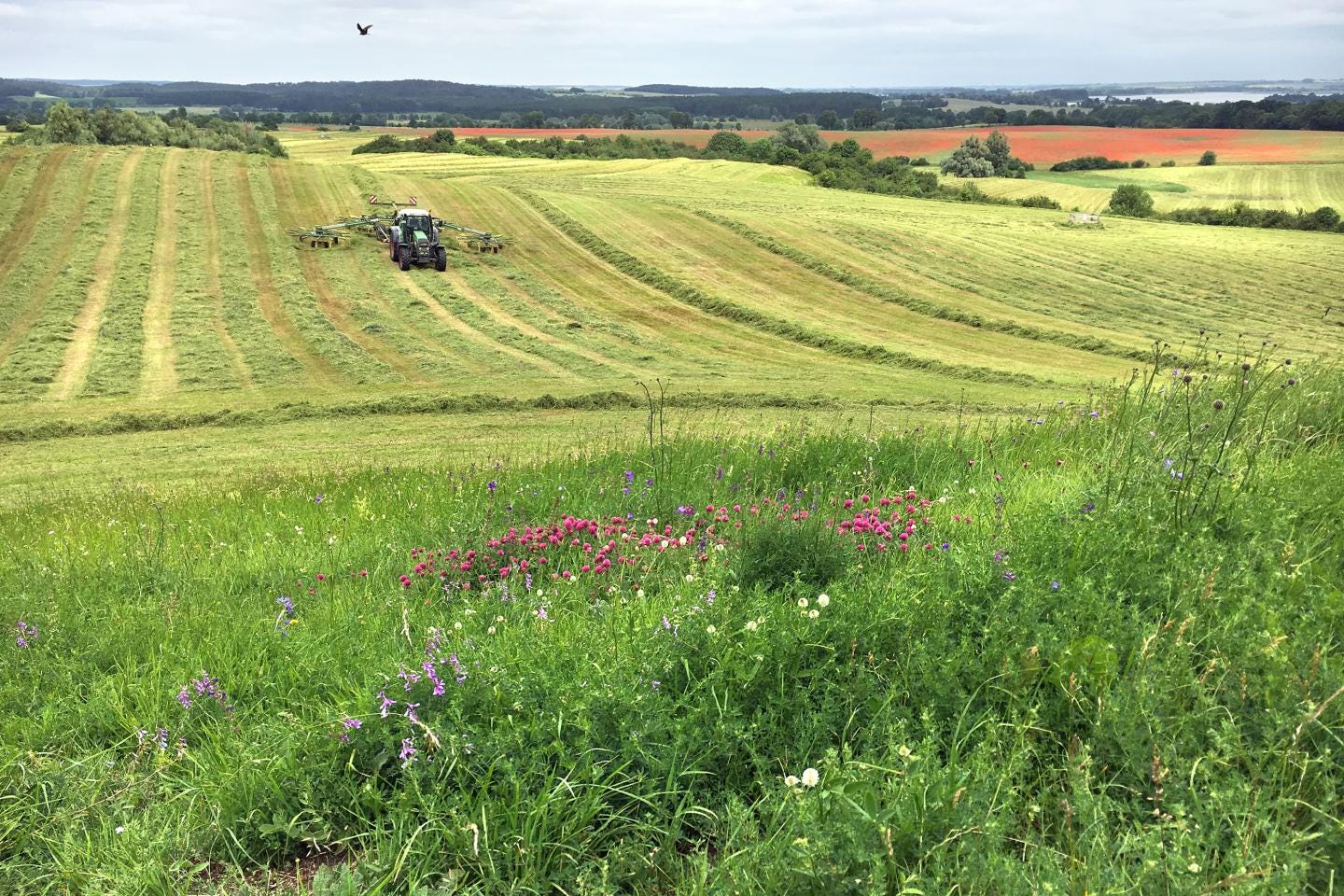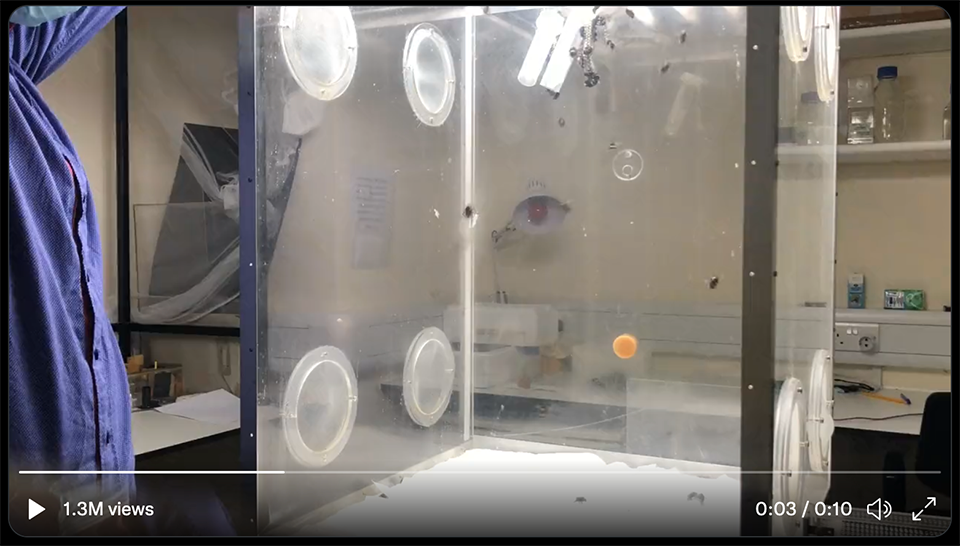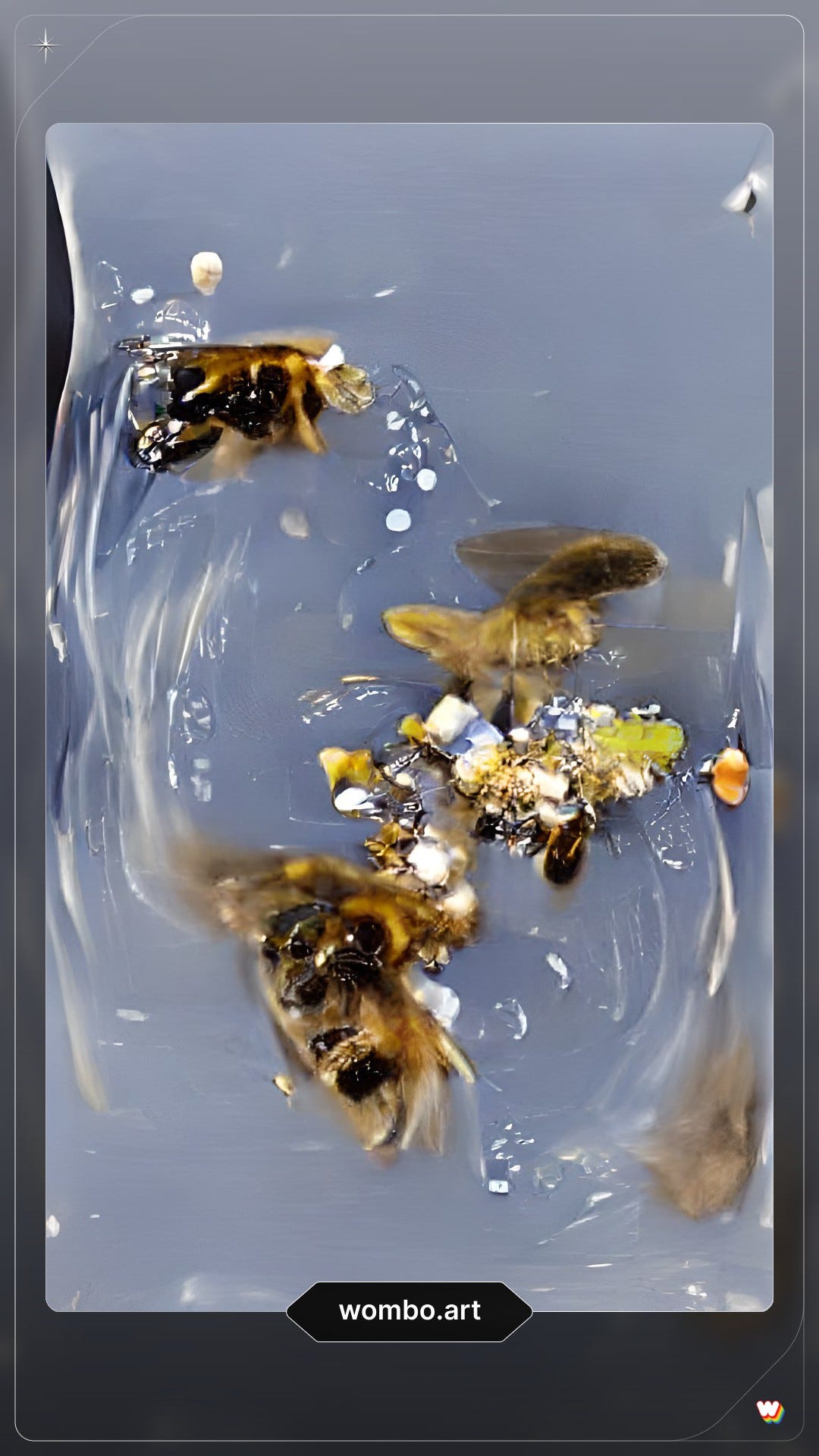Bees fall from the sky when the lights go out. Where did western honey bees come from? Court rejects California’s pesticide approval. Are wildlife identification apps good for conservation?
Keeping you connected to the world of bees
Was this email forwarded to you? Sign up here.
Conservation
On-farm experiences shape farmer knowledge, perceptions of pollinators, and management practices
(Twitter, JuliaOsterman @osterman_julia) “We surveyed 560 farmers from 11 countries about their perceptions of pollinators. So, What did we find? Farmers perceived bees as more important pollinators than non-bees... However 75 % of the farmers acknowledged that non-bees contributed to the pollination of their crop... Their perceptions of pollinators aligned closely with scientific observations” Original paper
New resources to help conserve bumble bees in the Pacific Northwest
(Twitter, PNW Bumblebee Atlas @pnwbumblebees) “We’re excited to announce the release of 2 resources to help conserve bumble bees in the PNW... Summary and Species Accounts [and] Habitat Management for Bumble Bees in the Pacific Northwest”
Monarch count continues to grow
(Twitter, The Xerces Society @xercessociety) “News too exciting to keep to ourselves! This year’s Western Monarch Thanksgiving Count data now indicate more than 200,000 monarch butterflies overwintering in California, up from an all-time low of just 2,000 last year”
Economics
Canadian beekeeping company expanding to major cities
(PR Newswire) “Alvéole, the Canadian urban beekeeping company, is expanding into 12 new major cities throughout North America, as well as five in Europe... Approximately 50,000 new tenants per hive will arrive within the Canadian cities of Halifax, Kitchener, Waterloo, and Victoria. The US cities of Boston, Baltimore, Pittsburgh, Atlanta, Charlotte, Nashville, Minneapolis, Phoenix and Sacramento, in addition to the European cities of Amsterdam, Brussels, Frankfurt, London and Berlin will also be hosting new arrivals.”
Policy/Law
Court rejects California’s approval of pesticide sulfoxaflor
(Earthjustice) A California Superior Court ruled that the pesticide sulfoxaflor can no longer be used in the state because its approval violated state environmental law. The ruling comes in a case brought by the American Beekeeping Federation and the Pollinator Stewardship Council, represented in court by Earthjustice, against the California Department of Pesticide Regulation. The decision will protect commercial bee colonies visiting the state for the massive almond crop bloom, as well as native pollinators like Monarch butterflies in the spring.
Defra may approve ‘devastating’ bee-killing pesticide, campaigners fear
(The Guardian) Sources inside the UK government’s Department for Environment, Food and Rural Affairs (Defra) say that, after pressure from the sugar beet industry, an emergency authorization of the neonicotinoid Cruiser SB is likely to be announced in the coming weeks. The pesticide, which is lethal to bees and other insects, is prohibited under European Union law except in extreme circumstances. The sugar beet industry says it needs the pesticide to protect seeds from a disease called virus yellows, which reduces yield and sugar content. In 2017, Michael Gove, the then environment secretary, welcomed the EU ban, and promised that “unless the scientific evidence changes, the government will maintain these increased restrictions post-Brexit”.
Government of Costa Rica must determine in three months how fipronil affects bees
(The Costa Rica News) If their agricultural or veterinary use causes damage to these insects or impairs their pollinating function, the State must take measures to resolve the situation.
Science
Bees fall from the sky when the lights go out
(Twitter, Hamish Symington @HamishSymington) “Here’s another video of bees falling out of the sky when the lights go out. I’m surprised it’s an on/off choice for them – no graceful trying to glide to land or anything like that, they literally just stop flying and plummet. Surely that’s more dangerous than keeping flying?”
Streetwise bees cut corners to find food
(Phys.org, University of Exeter) Bumblebees waste no time enjoying the beauty of flowers – instead learning the bare minimum about where to land and find food, new research shows. Researchers presented bees with artificial flowers – circles of blue or yellow, or half and half, with sugar solution in the center. The artificial flowers were positioned upright, and the flight pattern of bees meant they mostly saw the bottom half of the circles as they came in to land. When faced with a test circle that had a different arrangement of the two colors, bees paid most attention to whatever color had appeared in the lower half of the artificial flower they were used to – suggesting they learned just this basic information rather than inspecting and memorizing the whole flower prior to landing.
Where did western honey bees come from? New research finds the sweet spot
(ScienceDaily, York University) For decades, scientists have hotly debated the origin of the western honey bee. Now, new research led by York University has discovered these popular honey-producing bees most likely originated in Asia. The research team sequenced 251 genomes from 18 subspecies from the honey bee’s native range and used this data to reconstruct the origin and pattern of dispersal of honey bees. The team found that an Asian origin – likely Western Asia – was strongly supported by the genetic data.
(Twitter, Trevor Sless @SlessTrevor) “I’m very excited to announce the release of our study on the phylogeny of brood parasitic cuckoo bees in the subfamily Nomadinae... we used ultraconserved elements to build a phylogeny of over 100 species representing 90% of genera in the subfamily Nomadinae, supporting the broader definition of this group identified by previous research and recommending changes to some tribes...” Original paper
Big gaps in quest to sequence genomes of all animals
(ScienceDaily, Washington State University) Efforts to sequence the genomes of the world's animals tend to focus on those that most resemble humans with the work conducted almost entirely in the Global North, according to new analysis. Researchers warn current efforts are overlooking huge swathes of diversity and opportunity. Their analysis found that nearly 3,300 animal species have had their genomes sequenced and assembled, a process that gives organizational context to an organism’s DNA. While the rate is picking up, the number is small in comparison to the world's 1.66 million animal species, and vertebrates make up the lion’s share of current sequences. They account for 54% of all the assemblies, despite representing only 3.9% of animal species. In contrast, the invertebrates of the Arthropoda phylum, which includes insects and spiders, comprise only 34% of current datasets while representing 78.5% of all species.
Society/Culture
Are wildlife identification apps good for conservation?
(The Revelator) “The COVID-19 pandemic gave me a chance to put down my paper field guides and test my preconceptions about some popular digital tools.”
(Emergence Magazine) Richard Powers reaches beyond the cold calculus of kin selection to look at how human beings find kinship with nonhuman relatives and how stories can reveal our shared fate.
One More Thing…
This past week, lots of people in the Twitter-sphere were using the Wombo art app to create colorful and dreamy AI-generated images based on the titles of their research work. The results are variously amazing and bizarre – but altogether absolutely fun to create and “a huge rabbit hole to go down – you have been warned!” Wombo, by the way, is the Canadian AI company that gave us the app that can transform any image of a person into a deepfake singing video.
Here are a couple of images I generated from the titles of my own recent articles.
“Pollinators could win when the infrastructure bill passes”
“Honey bees are accumulating airborne microplastics on their bodies”










